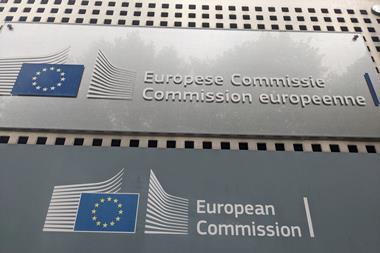Introducing a framework to assess the sustainability features of government bonds would be a welcome evolution of the European Union’s sustainable finance disclosures regulation (SFDR), according to a representative of the Dutch Federation of Pension Funds.
Introducing such a framework was one of the suggestions made by the European supervisory authorities (ESAs) in a report on the future of the SFDR last month.
Developing minimum criteria to assess the sustainability contribution of government bonds could help plug one of the implementation gaps in the SFDR, according to the ESAs.
Speaking at IPE’s recent Transition conference, Matthies Verstegen, who heads the Brussels office for Pensioenfederatie, welcomed the ESAs’ suggestion.
“Pension funds and insurance companies will need to be invested in government bonds to some degree for diversification and interest hedging purposes,” he said.“If you incorporate them into the mix, then you know you might look very unambitious, even if you are very ambitious within equity.”
The ESAs said that without at least general criteria to assess the sustainability contribution of government bonds, it would be difficult for investors with relatively large sovereign exposures, such as pension funds, to fully disclose on the sustainability features of their investments.
Rules relating to the EU taxonomy rules already stipulate that the Commission should consider whether changes are necessary to facilitate sustainability performance reporting for sovereign bonds.
Verstegen also welcomed the ESAs’ ideas regarding transition finance, but said introducing a sustainability indicator for financial products would raise concerns among pension funds.
In their report, the ESAs said the Commission could establish a product labelling system and/or sustainability indicator(s) to help consumers make sense of the range of financial products addressing sustainability themes.
A grading scale could refer to letters or colours, the ESAs said, adding that developing a sustainability indicator “is not without risks and technical challenges”.
Verstegen said that a pension fund’s grading would be constrained because it typically needs to maintain a diversified portfolio. He also questioned the benefit of an indicator system from a pension fund perspective.
“Do we really need to be making these kinds of comparisons? I don’t think this helps with communicating clearly to pension fund participants.”
Pension fund industry bodies have been warning that EU legislation has been increasingly incorrectly framing pension funds as providing products sold to consumers or customers that actively shop for a product.
Also speaking on the panel, Andreas Stepnitzka, deputy director for regulatory policy at the European Fund and Asset Management Association (EFAMA), said he hoped the Commission’s next SFDR steps would involve following through with a product categorisation system, with a transition category “more important than ever”.
“We can all invest in the same green companies, but what we want to achieve is behavioural change, and so this is where the real trigger will lie,” he said.
Stepnitzka also said the EU regime around sustainability disclosures, including rules on product suitability testing under MIFID II and the Insurance Distribution Directive (IDD), needed to be improved because the communication that was resulting from them was not necessarily suitable for the target audience.
“We’re currently left with all this technical lingo – do you want a taxonomy-aligned product or do you want PAIs [principal adverse impacts]? No one understands this,” he said, adding that it was important to be able to bring retail investors “on this journey with us without us being in breach of the disclosure rules that are there”.
The latest digital edition of IPE’s magazine is now available
























No comments yet